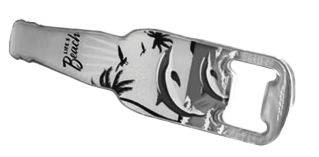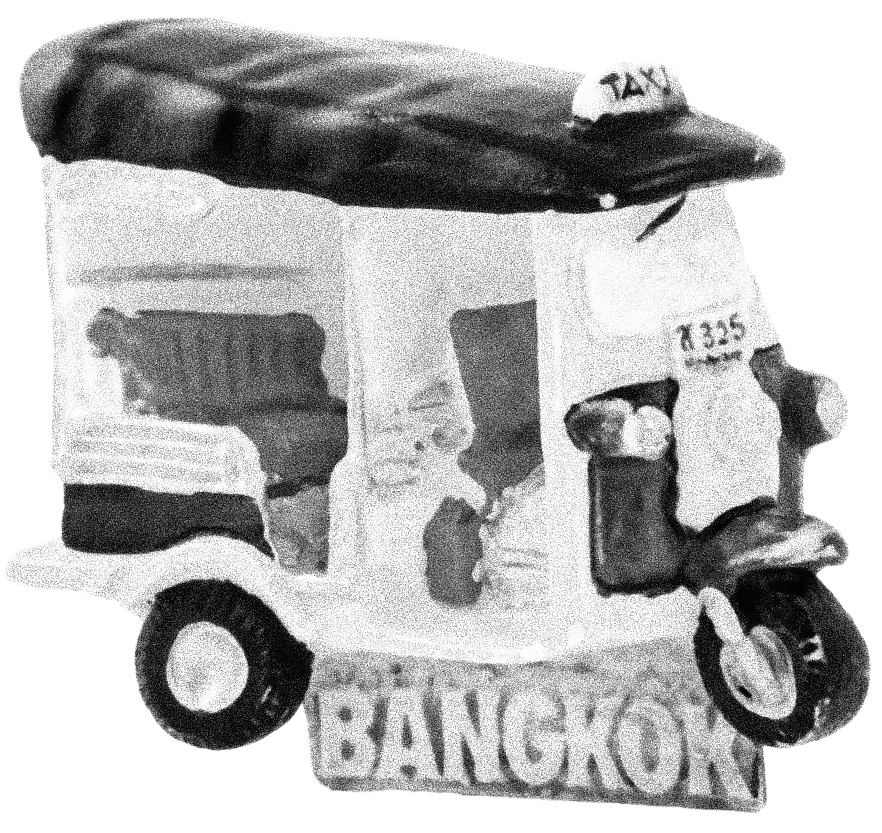
Trouble in paradise
Their dream vacation,
the locals’ home.
by Yong-Yu Huang
Four years ago, Medill fourth- year Sophia Perry considered her hometown of Hilo, Hawai’i, quiet, rural and less accessed by tourists in comparison to western areas of the island. During the COVID-19 pandemic, the streets were peaceful, the beaches sat empty and locals reclaimed their space.
This past spring break, she watched a tourist bus roll into her hometown for the first time, shattering the tranquility.
“I was a little bit like, ‘what the heck?’” Perry says. “This is so bizarre.”
According to Hawai’i’s Department of Business, Economic Development, and Tourism, the state received almost 9.7 million visitors in 2024. That same year, tourists contributed $20.7 billion to Hawai’i’s economy –– a foundational component.
Considering tourism’s financial impact and the state’s undeniable reliance on the industry, this dynamic has long been at the heart of ongoing tension between visitors and locals in Hawai’i.
“They’re everywhere,” Perry says. “They’re in grocery stores, they’re walking on the side of the road. They’re the people in the car who don’t know how to drive on our streets.”
Places like Hawai’i and Guam are popular tourist destinations, with some cities receiving millions of visitors each year. However, complicated histories and politics lie beneath these picturesque beaches and crystalline waters.
The U.S. annexed Hawai’i and Guam during periods of imperial expansion, leading to the loss of Indigenous sovereignty. Today, their economies rely heavily on tourism, even as locals grapple with the lasting impacts of colonization and environmental exploitation. Complicated questions also arise about how these places serve as both home and holiday.
Some of these issues sit just beneath the surface. According to Perry, many of Hawai’i’s famous resorts feature human- made beaches. “You think you’re enjoying Hawai’i –– that’s not even Hawai’i,” Perry says. “Like it is, but it’s not.”
Throughout high school, SESP fourth- year Hana-lei Ji worked in Japanese restaurants on Hawai’i Island. When tourism surged after the pandemic, the presence of visitors frustrated her. Quarantine orders were still in place, and local communities remained cautious. However, Ji would see people coming in from places still considered pandemic hotspots, such as California.
“I was like, ‘You guys are supposed to not be here. You guys need to be quarantining,’” she says.
Hawai’i’s housing market, already strained, has had to grapple with short-term rentals and other housing options catered towards tourists. Snowbirds, or people who come to Hawai’i to escape winters, snap up vacation homes at exorbitant prices — those residences sit empty. Additionally, the rise of remote work has prompted people to move to Hawai’i. All of these issues exacerbate Hawai’i’s housing crisis.
And in times of crisis, residents can struggle to compete with the tourism industry’s substantial political influence. After the 2023 Maui wildfires, government officials provided 8,000 displaced residents of Lahaina with temporary housing in nearby hotels, provisionally shutting down tourism. But before these residents had fully regained their footing and found permanent housing, the government reopened the area to vacationers. As tourists flooded back into hotels, displaced residents were forced to find new housing.
“I think that’s a pretty big example in how the government, or just the industry itself too, prioritizes tourism over local residents, over the Indigenous people, and over the land,” Ji says.
Perry says residents bore the brunt of the water shortage during fires while hotel pools and golf courses continued to operate without restriction.
Water usage has also arisen as a subject of contention between the tourism industry and Hawai’i residents. Hawai’i not only has limited water resources, but also experiences the effects of El Niño, the Pacific climate cycle, which can bring both flash floods and more severe droughts.
According to the National Integrated Drought Information System, the state has experienced longer and more severe droughts in the last century. Tourism puts a strain on these resources, as the industry and local communities diverge in their approach to water usage.
Like Ji, Perry also worked as a restaurant hostess. “So technically, my paycheck is coming from tourists, but my tax dollars are going back to the tourists,” Perry says.
Perry says it often feels like tourists fail to actually learn about the places they’re vacationing in before they visit, leading to complaints about details such as Hilo’s rainy weather or the early closing times of local businesses.
These comments come off as entitled and demonstrate a lack of interest in learning about Hawai’i, she adds.
“You could do a little bit of research before you come on your paradise vacation,” Perry says. “I’m sorry that it’s raining. Welcome to nature.”
As visitors pour into these destinations, Indigenous communities experience the effects of both the current conditions of the tourism industry, as well as the persisting impacts of colonialism.
“There’s also, in general, a lack of recognition of the fact that native Haiwaiian people in Hawai’i are increasingly displaced,” Ji says, noting that the majority of native Haiwaiians do not live in Hawai’i anymore. “There are supposed to be programs in the government to assist native Hawaiian residents to have land, to have homes, but it’s so slow, and then there tends to be more of a priority placed on tourism and the tourists because of the economy.”
Ji says people who grow up in Hawai’i have a stronger awareness of colonialism, Haiwaiian history and Indigenous practices compared to residents of the U.S. mainland.
Similarly, Guam –– the largest island in Micronesia and home of the CHamoru people — has a tourism industry rooted in complex history. After the Japanese occupation of Guam during World War II, the United States government took over the island and converted it into a military operations base in 1944. In 1950, President Truman signed the Guam Organic Act, designating the island as an unincorporated territory with limited self-governance and making its residents American citizens.
Weinberg third-year Lula Blas Fox grew up in a CHamoru family in Illinois but spent the last two summers living with her extended family in Guam. Nowadays, Blas Fox says, a majority of CHamoru belong to the diaspora due to factors like military, gentrification and tourism.
The U.S. military maintains a geopolitically important base in Guam. To date, it still conducts bombing tests on the island’s beaches. Blas Fox points out that the military influence on the tourism industry encourages this curated aesthetic.
“The tourism industry is complicit in the way that it frames our islands as these tropical paradises,” Blas Fox says. “They bring in millions or billions of dollars in revenue, and they kind of obscure the violence enacted onto the land by the military by just framing it as a tropical paradise.”
Such militarism feeds into the racialization and hyper-sexualization of Guam’s Pacific Islanders, Blas Fox says. Tourism in Guam is mainly owned and operated by Asians –– specifically Japanese and Korean business owners and companies –– and not by CHamorus.
Many of the people interested in Guam are also Asian tourists, especially given the island’s proximity to the continent — the island is often rhetorically framed as “a slice of America in Asia.”
Even the cultural aspects of Guam that are advertised to tourists are not necessarily accurate.
Blas Fox highlights that instead of CHamoru dancers performing traditional dances for tourists, dancers have historically been of Asian descent from Hawai’i performing a blend of Polynesian dances. Guam is not a Polynesian island.
“It’s all to serve this idea that tourists are coming to this super exotic and culturally backwards place where you can still see the sexualized native and embrace it and see this beautiful performance,” Blas Fox says.
Ji Hye Choi (Weinberg ‘23) grew up on Guam as the daughter of Korean immigrants. According to Choi, tourism largely caters to the military presence, which also contributes to gender violence on Guam.
“Growing up here, and learning more about the history of Guam and the history of colonialism and the build- up of militarization, you just witness it,” Choi says. “Like you just hear the military planes doing God knows what up there. Oh, I know what they’re doing. They’re poisoning the air, the land, the water, right?”
Choi’s mother works as a vendor at one of Guam’s landmarks, selling hats, flowers and other souvenirs to tourists. She has been doing this job for more than two decades.
Although Choi sees how tourism is a source of income and survival for many residents –– low-income immigrants, in particular –– she cannot ignore the industry’s complex background.
“I recognize, as Asian immigrants, we engage in settler colonialism, because this is stolen land,” Choi says. “We’re all on stolen land.”
When a heavily militarized Guam reopened from security clearance in 1962, the U.S. government sought to make it economically viable. Its solution was tourism. By 1967, Pan American Airways began service from Japan, marking the start of Guam’s tourism industry.
Guam’s tourism industry centers around one district –– Tumon. Resorts and hotels line the bay, surrounded by homes, shopping centers and water parks.
“It looks a lot like Florida, and it’s really dystopian,” Blas Fox says. “It’s really weird. You don’t really see CHamorus walking around there.”
However, Tumon Bay has also traditionally been a fishing location for the CHamoru people. As development sprang up to fortify the tourism industry, it has become increasingly difficult to access traditional sites.
“A lot of the problems with these hotels is also that they don’t let us onto the property,” Blas Fox says. “This is our land. We’ve been fishing in this bay for thousands of years. We have deep stories of these physical places, but we’re denied access, and these beaches are privatized.”
While visitors may arrive with good intentions and genuine curiosity, the reality of tourism’s effects on local communities paints a more complicated picture for residents.
Perry says she understands the interest in traveling. However, given the conditions under which tourism operates in Hawai’i, she says the impact of the industry is a net negative for her hometown.
“I think the responsibility lies on our leaders to create systems and change our structures so that we can have a sustainable economy that genuinely serves its residents first,” Perry says.
But the responsibility doesn’t just fall on people in power, Ji says. Visiting a very different culture can change people’s perspectives, and Ji points out that visitors should approach Hawai’i with the intention of interacting with the community in meaningful ways. Conversely, it also becomes alarmingly clear when many tourists –– and the industry –– fail to share these intentions, Ji says.
“There’s a term in Hawai’i called ‘aloha aina,’ which means to love or care for the land, which I think a lot of people growing up in Hawai’i have this embedded within them because of either Indigenous practices, or going to school, or just being in Hawai’i,” Ji says. “It’s so easy to see tourists not having that same care or respect.”






